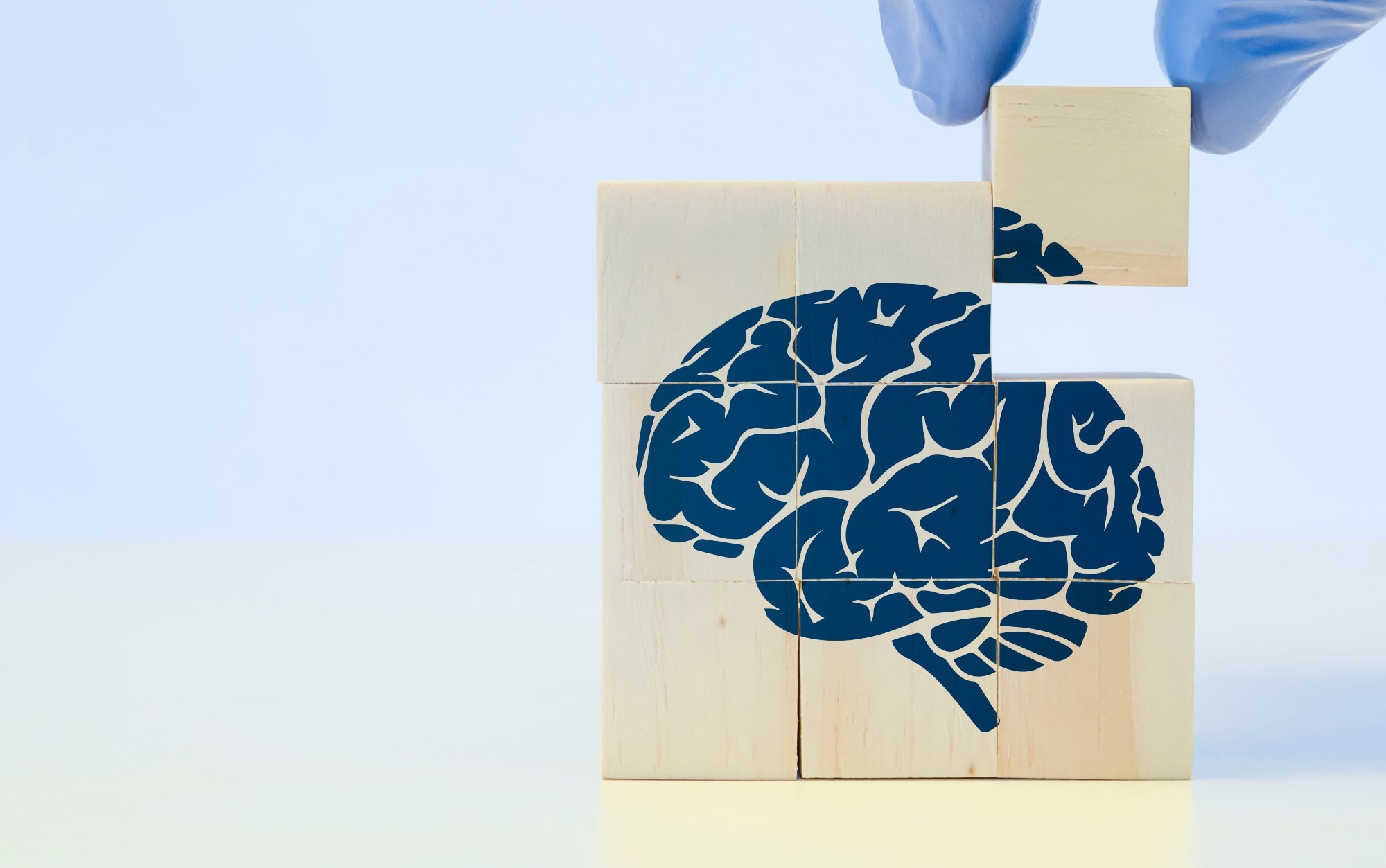A new review uncovers how chronic alcohol consumption accelerates Alzheimer’s pathology through oxidative stress and neuroinflammatory cascades, while spotlighting promising molecular and metabolic interventions to protect the brain.
Review: Alcohol addiction and Alzheimer’s disease: a molecular collision course. Image Credit: Antonio Marca / Shutterstock
In a recent article published in the journal Translational Psychiatry, researchers reviewed the contribution of chronic alcohol consumption to AD, focusing on its damage to neural pathways, disruption of neurotransmitters, and intensification of oxidative stress and inflammation. The review clarifies that “AUD” is the preferred diagnostic term, while “alcohol addiction” refers to severe AUD characterized by compulsive use and loss of control.
The current evidence suggests that excessive use of alcohol heightens vulnerability to AD through multiple molecular mechanisms, but that personalized treatments, early interventions, and neuroprotective drugs could slow the progression of the disease and reduce risk.
Alcohol consumption and Alzheimer’s
Alcohol use disorder (AUD) and AD are major causes of cognitive decline with overlapping brain, molecular, and behavioral abnormalities. AUD ranges from mild to severe forms of dependence characterized by craving, loss of control, and continued drinking despite harm.
Both AD and AUD affect similar brain regions, especially the prefrontal cortex and hippocampal-limbic circuitry, leading to impairments in executive function, decision-making, and behavior regulation. Epidemiological studies increasingly show that AUD is an independent risk factor for AD and AD-like dementia.
Both disorders disrupt large-scale brain networks such as the default mode network and share symptoms like emotional instability and sleep disturbances. At the molecular level, prolonged alcohol exposure accelerates AD-related changes, including amyloid-beta buildup, tau phosphorylation, and chronic neuroinflammation.
Experimental findings reveal complex, dose-dependent effects, with low alcohol exposure occasionally showing model-specific signals of neuroprotection in preclinical studies, but chronic heavy drinking causing severe neurotoxicity. As neuroinflammation and metabolic dysregulation are key shared mechanisms linking the two diseases, a deeper understanding of how alcohol addiction intensifies AD pathology could guide strategies for targeted prevention. Sex may also modulate these effects, influencing microglial responses and neuroinflammatory severity.
Underlying mechanisms
Alcohol contributes to AD through multiple interconnected mechanisms that damage brain cells and disrupt molecular signaling.
Chronic alcohol exposure increases oxidative stress by generating excess reactive oxygen species (ROS) and overwhelming antioxidant enzymes such as superoxide dismutase (SOD) and glutathione peroxidase (GPx), which damages mitochondria and impairs cellular energy production in the hippocampus, a region vital for memory. These effects lead to neuronal death, disrupted calcium regulation, and impaired neuroplasticity.
Alcohol also activates inflammatory pathways such as TLR4/NF-κB and suppresses antioxidant defenses (Nrf2/HO-1), creating a feedback loop of inflammation and oxidative damage.
Additionally, alcohol suppresses hippocampal neurogenesis by triggering neuroinflammation, disrupting the balance of cholinergic and glutamatergic signaling, and activating cannabinoid receptors that promote neuronal apoptosis.
It alters neurotransmitter systems, reducing acetylcholine synthesis, disturbing gamma-aminobutyric acid (GABA)/glutamate balance, and impairing dopamine and serotonin regulation, causing cognitive and emotional disturbances typical of both AUD and AD.
Neuroinflammation is further intensified by microglial M1 polarization and astrocyte activation, leading to chronic inflammation and neuronal loss.
At the molecular level, ethanol promotes tau hyperphosphorylation via GSK-3β and JNK pathways and increases amyloid-beta (Aβ) accumulation by enhancing BACE1 activity and reducing Aβ clearance through impaired insulin-degrading enzyme (IDE) and low-density lipoprotein receptor-related protein 1 (LRP1). These combined effects accelerate AD-like neurodegeneration, with dose, duration, and sex influencing severity.
Counteracting AUD-AD links
Several emerging therapeutic strategies aim to counteract the biological links between alcohol addiction and AD. Targeting key molecular pathways, dual inhibition of p38 MAPK and GSK-3β has shown promise in reducing tau hyperphosphorylation, amyloid formation, and oxidative stress.
Compounds such as MW150, sanggenon C, and magnesium improve memory and neuronal survival, while nanodrug delivery and structural optimization may enhance their brain bioavailability.
TLR4 antagonists, including TAK-242 and novel derivatives of tanshinone IIA and dihydroartemisinin, suppress neuroinflammation by blocking NF-κB and MAPK signaling, although translation is limited by blood–brain barrier penetration and pharmacokinetic constraints (for example, the clinical failure of Eritoran underscores these challenges).
Neurotransmitter-targeted treatments aim to restore cholinergic-GABAergic balance and glutamate regulation. Co-modulators and drugs like riluzole show potential for improving cognition and synaptic stability.
Metabolic interventions focus on enhancing acetaldehyde clearance via ALDH2 activation using compounds such as Alda-1, and selective use of probiotics; for example, Duolac ProAP4 lowered blood acetaldehyde only in ALDH2*2 carriers, with no effect in wild-type individuals.
Epigenetic therapies using histone deacetylase (HDAC) inhibitors (such as vorinostat or sodium butyrate) restore histone acetylation and synaptic plasticity, mitigating alcohol-induced oxidative stress.
Addressing brain insulin resistance with antioxidants and nutrients such as ω-3 fatty acids, curcumin, and vitamin D is an area of active investigation, with mixed and preliminary clinical evidence and a need for better-designed trials, which may slow AD progression if future studies confirm benefit.
Finally, early abstinence combined with cognitive training strengthens neuroplasticity, while personalized nutritional strategies integrating genetics and metabolism offer a path toward precision therapy in alcohol-related AD prevention.
Conclusions
Current evidence indicates that alcohol addiction accelerates AD progression through shared molecular mechanisms involving oxidative stress, neuroinflammation, and microglial activation.
Chronic alcohol exposure heightens ROS production and promotes pro-inflammatory M1 microglial polarization, contributing to neuronal damage. A major challenge for therapeutic advancement is poor blood–brain barrier permeability, which limits drug delivery. Nanotechnology-based approaches such as lipid-polymer hybrids, chitosan-hyaluronic acid nanoparticles, and gold nanorods show promise in enhancing brain drug accumulation, detecting and inhibiting Aβ aggregation, and restoring neuronal function.
Future research should focus on optimizing dual-functional nanoparticles targeting key signaling pathways, improving blood–brain barrier transport, and validating safety thresholds for nanomaterials.
Developing biomarker models using p-tau217 and neurofilament light chains may help identify high-risk individuals with AUD. Advanced tools like organoid models and in vivo imaging will be essential to clarify alcohol–AD interactions and guide precision, safe therapeutic development.
Journal reference:
- Chang, J.-S., Huang, H.-Z., Yuan, M., Zhou, Y., Liu, D., Zhan, K.-B., Zhu, L.-Q. (2025). Alcohol addiction and Alzheimer’s disease: a molecular collision course. Translational Psychiatry 15, 410. DOI: 10.1038/s41398-025-03619-6, https://www.nature.com/articles/s41398-025-03619-6









